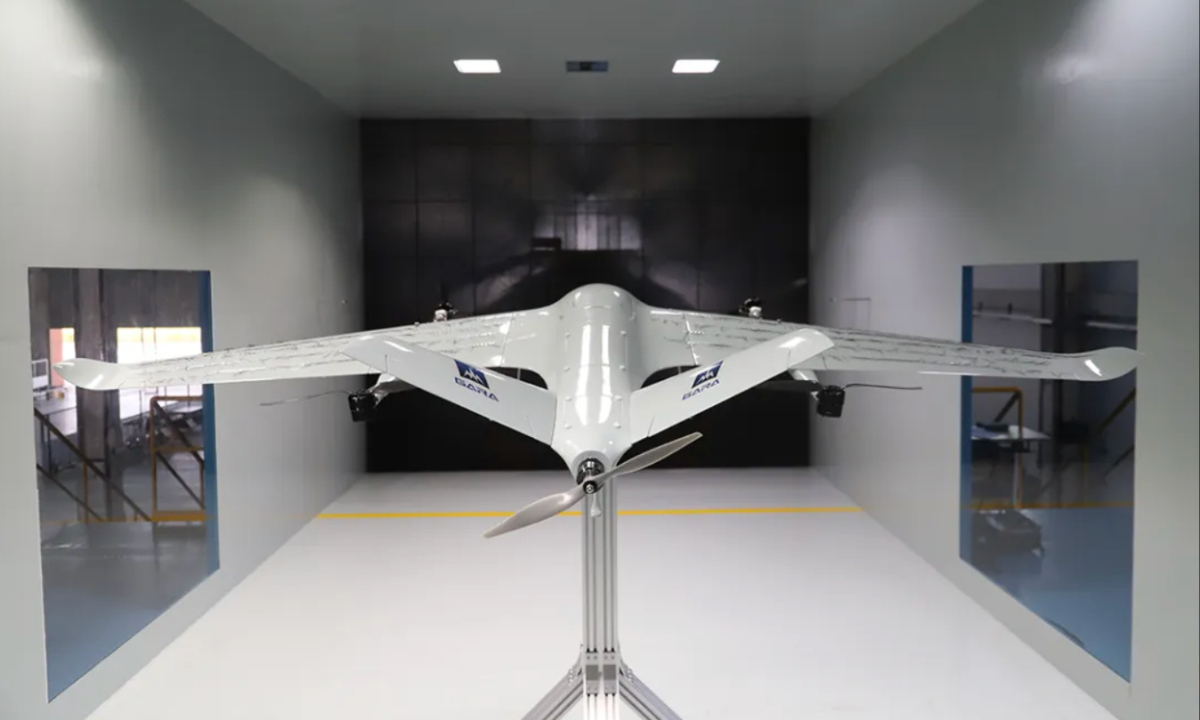
China's first composite wind tunnel experiment equipment dedicated to aerodynamic research of low-altitude aircraft was officially completed and put into operation at the Guangdong Aerospace Research Academy in Guangzhou, South China's Guangdong Province on July 16, 2025. Photo: Screenshot from the WeChat account of Science and Technology Daily
China's first composite wind tunnel dedicated to aerodynamic research of low-altitude aircraft was officially completed and put into operation in Guangzhou, South China's Guangdong Province on Wednesday, filling a critical infrastructure gap between laboratory research and real-world scenario validation for low-altitude aircraft.
The wind tunnel, developed by the Guangdong Aerospace Research Academy (GARA) in Guangzhou's Nansha district marks a significant breakthrough in building foundational scientific research platforms for the low-altitude economy in the Guangdong-Hong Kong-Macao Greater Bay Area, the Science and Technology Daily reported on Thursday.
A wind tunnel is a large experimental platform that generates controlled airflow to simulate the flight conditions. Through wind tunnel experiments, researchers can conduct in-depth study of the aerodynamic characteristics of aircraft and optimize their control performance. It is a critical step before an aircraft can fly, according to the China Central Television.
Compared to outdoor testing, wind tunnel experiments offer shorter testing cycles and lower costs, the Science and Technology Daily reported.
"Wind tunnel testing works by fixing the aircraft in place and generating airflow to create relative motion, allowing for precise measurement of various technical parameters as if the aircraft were flying in the sky," explained Sun Liangbao, head of wind tunnel technology at the GARA. Sun noted that the new tunnel will play a key role in verifying aircraft wind resistance and safety, according to the Science and Technology Daily.
This wind tunnel integrates both the traditional aviation wind tunnel and the windshaper for drone testing, making it the first 4.5-meter-class wind tunnel in China dedicated to aerodynamic testing of low-altitude aircraft. It will provide low-altitude aircraft developers with efficient and convenient "on-the-doorstep" testing services, reducing the time from coordination to the completion of experiment to just three to four months. This is expected to significantly cut R&D costs and accelerate the commercialization of technological breakthroughs.
GARA also plans to establish the "Bay Area No.1" wind tunnel test data sharing platform for aircraft and will continue to work jointly with low-altitude aircraft R&D institutions, universities and enterprises to tackle key technologies and build a standardized wind tunnel testing system for low-altitude aircraft, according to media reports.
















